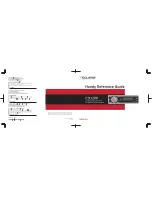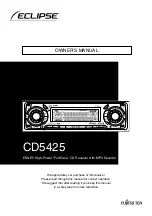
CIRCUIT DESCRIPTION
6-3
September 1994
Part No. 001-2008-300
6.1.7 WIDEBAND AUDIO AMPLIFIER (U203B)
U203A amplifies the detected audio and data sig-
nal. R280/R263 set the gain of the amplifier and
R256/R262 provide a DC reference level. C220
bypasses the 450 kHz IF signal and C240 bypasses
other frequencies. The output signal is adjusted by
R264 and fed to J201, pin 9.
6.1.8 RSSI AMPLIFIER (U203A)
U202, pin 13 is an output from an internal RSSI
(receive signal strength indicator) circuit which pro-
vides a current proportional to the strength of the 450
kHz IF signal. The RSSI output is buffered through
U203A and the level is adjusted by R261. The output
signal is then fed to J201, pin 7. The RSSI output is
not used at this time.
6.1.9 VCO (A006)
The Voltage-Controlled Oscillator (VCO) is
formed by Q802 circuitry and a resonator consisting
of L220. The VCO oscillates in a frequency range
from 753-771 MHz. Biasing of Q802 is provided by
R805, R806 and R807. AC voltage divider C812 and
C813 initiates and maintains oscillation. C803 cou-
ples Q802 to the tank circuit. RF choke L805 com-
pletes the DC bias path to ground.
The VCO frequency is controlled in part by DC
voltage across varactor diode CR802. As voltage
across a reverse-biased varactor diode increases, its
capacitance decreases. Therefore, VCO frequency
increases as the control voltage increases. The control
line is RF isolated from tank circuit by choke L804.
The amount of frequency change produced by CR802
is controlled by series capacitor C804.
6.1.10 ACTIVE FILTER
Q801 functions as a capacitance multiplier to
provide filtering of the 12V supply to Q802. R801
and R802 provide transistor bias, and C809 provides
the capacitance that is multiplied. If a noise pulse or
other voltage change appears on the collector, the base
voltage does not change significantly because of
C809. Therefore, the base current does not change
and transistor current remains constant.
R803 decouples the VCO output from AC
ground, L803 is an RF choke and C807, C808, C810
and C811 provide RF bypass.
6.1.11 BUFFER (Q208, Q209)
A cascode amplifier formed by Q208 and Q209
provides amplification and also isolation between the
VCO and Synthesizer. A cascode amplifier is used
because it provides high reverse isolation. The input
signal to this amplifier is tapped from the VCO RF
output. DC blocking and coupling to the VCO is pro-
vided by C268 and to the buffer by C261. Bias for the
amplifier is provided by R275, R279, R278 and R277.
Q209 is a common-emitter amplifier and Q208 is a
common-base with C260 providing RF bypass. L219
decouples the output from AC ground. R273 lowers
the Q of L219. The output is coupled by C309 to
U209, pin 11.
6.1.12 SYNTHESIZER (U209)
The synthesizer inputs/outputs are shown in Fig-
ure 6-3. The synthesizer output signal is the receiver
first injection frequency. This signal is produced by a
VCO (voltage-controller oscillator). The frequency of
this oscillator is controlled by a DC voltage from the
phase detector in synthesizer chip U209. This DC
voltage is filtered by a loop filter; C805, C806 and
R804 in the VCO circuitry.
Frequencies are selected by programming
counters in U209 to divide by a certain number. This
programming is provided through J201, pins 12, 18
and 20. The frequency stability of the synthesizer is
established by the
±
1.0 PPM stability of TCXO Y201.
This oscillator is stable from -30
°
C to +60
°
C (-22
°
F to
+140
°
F).
The VCO frequency of A006 is controlled by a
DC voltage produced by the phase detector in U209.
The phase detector senses the phase and frequency of
the two input signals and causes the VCO control volt-
age to increase or decrease if they are not the same.
When the frequencies are the same the VCO is then
"locked" on frequency and the control voltage is con-
stant.
One input signal is the reference frequency (f
R
).
This frequency is the 17.5 MHz TCXO frequency
divided by the reference counter to half the channel
spacing or 12.5 kHz.













































